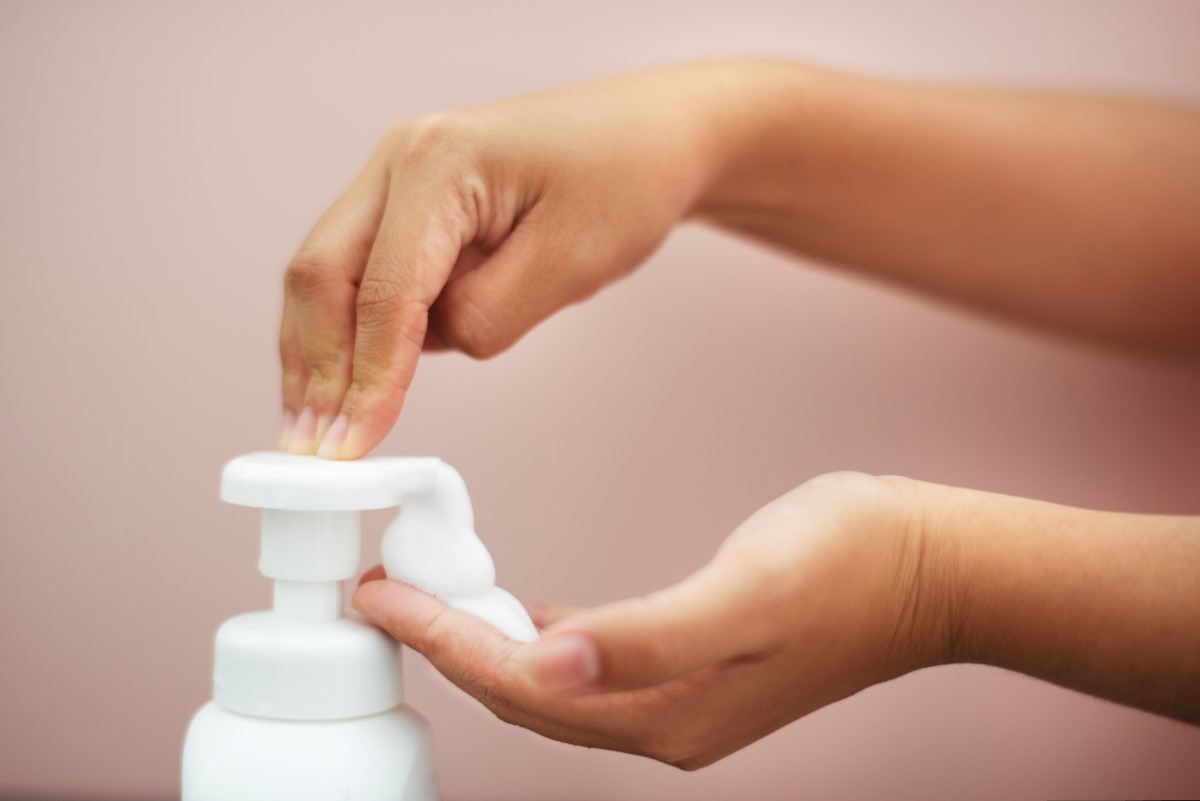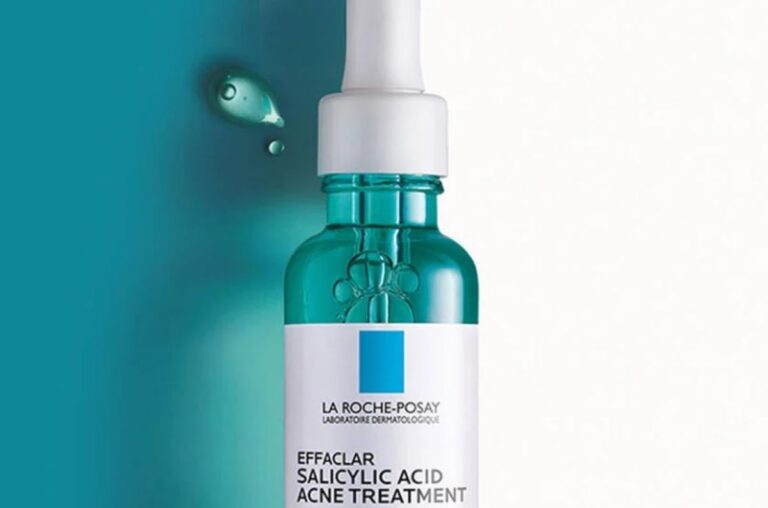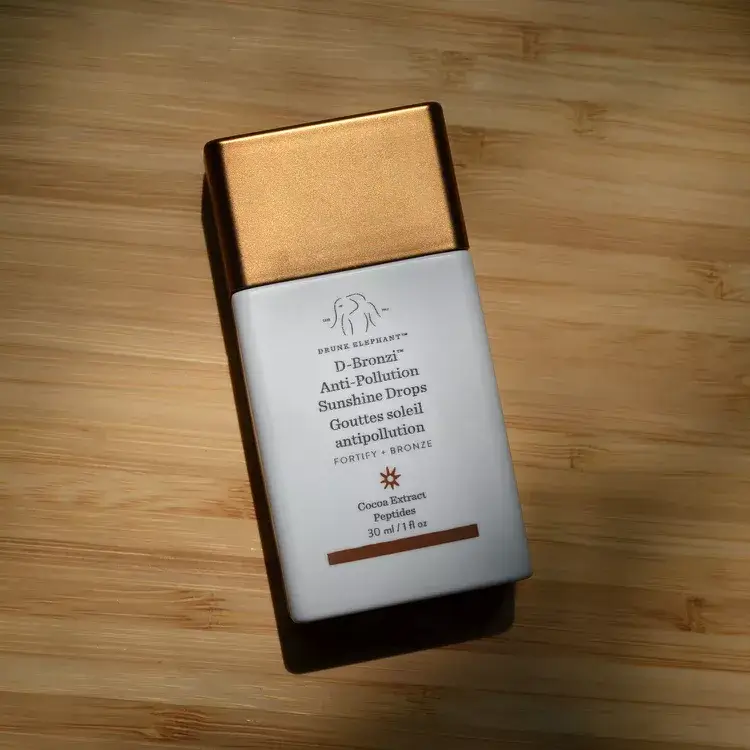How to Make Foaming Hand Soap: Master the Art of DIY
Making your own foamy hand soap is an easy and economical method to cut waste and preserve cleanliness. Not only does homemade foaming soap have a lower ingredient count, but you may alter the composition and smell to your liking. This tutorial will show you how to create foamy hand soap at home, go over its advantages, and offer advice on getting the right lather and consistency.
This book offers everything you need to make a more natural product, cut down on plastic use, or save money.
How to Make Foaming Hand Soap: A Historical Perspective on Its Creation
Compared to ordinary liquid soap, foamy hand soap is a relatively new invention. The idea of a soap that foams instantly when dispensed was driven by the desire for convenience, sustainability, and cost-effectiveness. Before its invention, standard liquid soaps were the norm, but they often required more product per use, leading to higher costs and greater environmental impact due to excessive packaging and water usage.
1. The Birth of Foaming Soap
The concept of foaming soap emerged in the early 2000s, as manufacturers sought to innovate in the hygiene market. The driving force behind this innovation was the need to reduce the amount of soap used per hand wash while maintaining or even enhancing its effectiveness.
The first commercially successful foaming soap dispensers utilized a pump mechanism that mixed liquid soap with air, creating a rich, foamy lather. This not only made the soap feel more luxurious but also ensured that less product was needed to achieve a thorough clean.
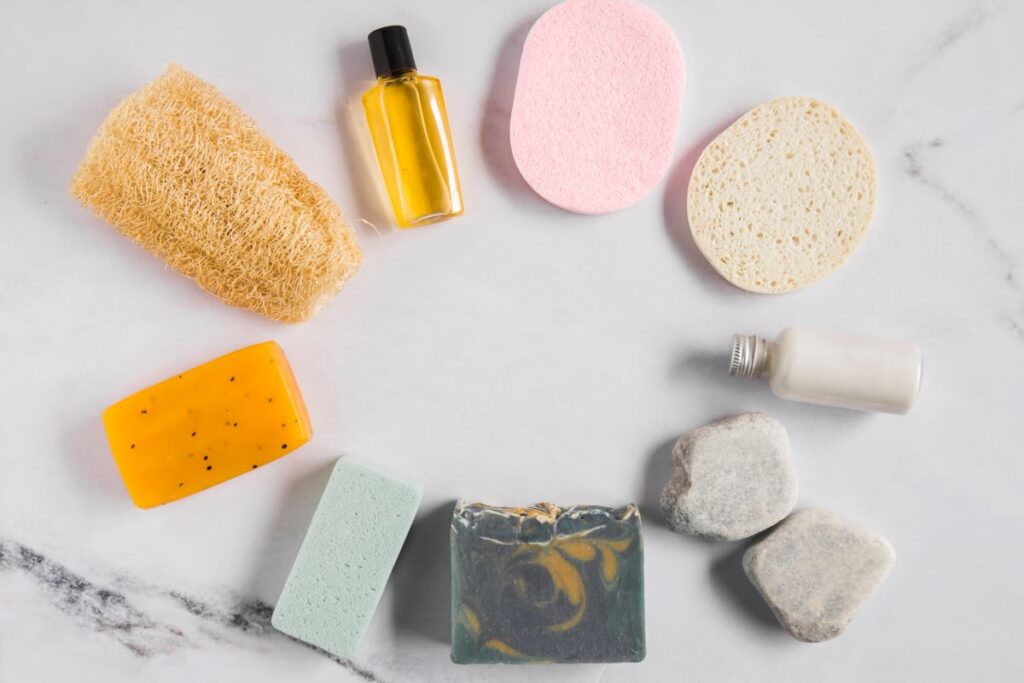
2. Innovation and Adoption
As consumers began to appreciate the benefits of foaming hand soap, its popularity grew rapidly. The key advantages—such as reduced soap consumption, longer-lasting products, and the pleasant tactile experience—were appealing to both households and businesses alike.
Environmental considerations also played a significant role in the adoption of foaming soap. With the need for less soap, packaging was reduced, and the overall carbon footprint of production and transportation decreased.
3. DIY Foaming Soap Movement
Foaming hand soap’s history saw a new chapter with the emergence of DIY culture in the 2010s. Due to the chance to control the ingredients and the need for customisation, people started experimenting with manufacturing their own foamy soap at home.
Making foamy hand soap at home allows people to use natural and environmentally friendly components instead of the harsh chemicals present in certain commercial goods. This trend not only gave consumers more control over their hygiene products but also further contributed to the reduction of plastic waste by allowing the reuse of soap dispensers.
4. The Future of Foaming Hand Soap
Today, foaming hand soap is a staple in many homes, businesses, and public spaces. Its history is a testament to the power of innovation and the growing awareness of sustainable practices. As we continue to prioritize both health and environmental impact, the popularity of foaming hand soap is likely to endure.
The ongoing interest in DIY formulations ensures that this product will remain both a practical and a creative outlet for those who wish to take their hand hygiene into their own hands.
Essential Supplies and Ingredients for Perfect Foaming Hand Soap
In addition to being a creative and enjoyable process, making your own foamy hand soap at home lets you customize the finished product to suit your tastes. Making foamy hand soap just takes a few basic tools and ingredients, depending on your preferences for a particular smell, allergies, or just your desire to try new things. Here’s a thorough look at what you will require to get going:
1. Essential Supplies
- Foaming Soap Dispenser: A foamy soap dispenser is the most crucial piece of equipment needed to make foaming hand soap. These are not like regular soap dispensers; instead, they have a unique pump mechanism that combines liquid soap with air to create a dense foam. Either buy a new foamy soap dispenser built especially for your handmade soap, or recycle an empty one from a store-bought item.
- Measuring Cups and Spoons: To make homemade foamy hand soap the proper consistency, precise proportions are essential. You may make sure that the water to soap ratio in your soap combination is correct by using a set of measuring cups and spoons.
- Mixing Bowl or Jar: You’ll need a small bowl or jar to mix the ingredients before transferring them to the dispenser. This helps ensure that all the components are well blended, especially if you’re adding essential oils or other additives.
- Funnel (Optional): A funnel can be very helpful for filling the dispenser with the soap mixture without spilling. This is particularly useful if your dispenser has a narrow opening.
2. Key Ingredients
- Liquid Castile Soap: Many DIY foamy hand soaps are based on castile soap, a vegetable-based soap derived from olive oil. It’s a natural, mild, and biodegradable solution that suits all skin types. If you want to add your own smell, use unscented Castile soap; if you want a less complicated method, use pre-scented Castile soap.
- Distilled or Filtered Water: The main component of foamy hand soap is water, which also aids in diluting the concentrated liquid soap. Use of distilled or filtered water is advised to prevent the introduction of contaminants that might degrade the soap’s quality or shorten its shelf life.
- Essential Oils (Optional): If you want to give your foamy hand soap a natural scent, essential oils are ideal. Popular options include citrus oils like lemon or orange for a fresh, energizing aroma, tea tree oil for its antimicrobial qualities, and lavender for a soothing perfume. It just takes a few drops to add a nice aroma that doesn’t overshadow the soap.
- Vitamin E Oil (Optional): Vitamin E oil acts as a natural preservative and adds extra moisturizing benefits. A few drops can enhance the skin-softening properties of your soap, making it particularly beneficial for those with dry or sensitive skin.
- Aloe Vera Gel (Optional): Aloe vera gel is a soothing and hydrating addition to your foaming hand soap. It’s particularly useful if you’re making soap for sensitive or irritated skin, as it can help calm and heal while cleansing.
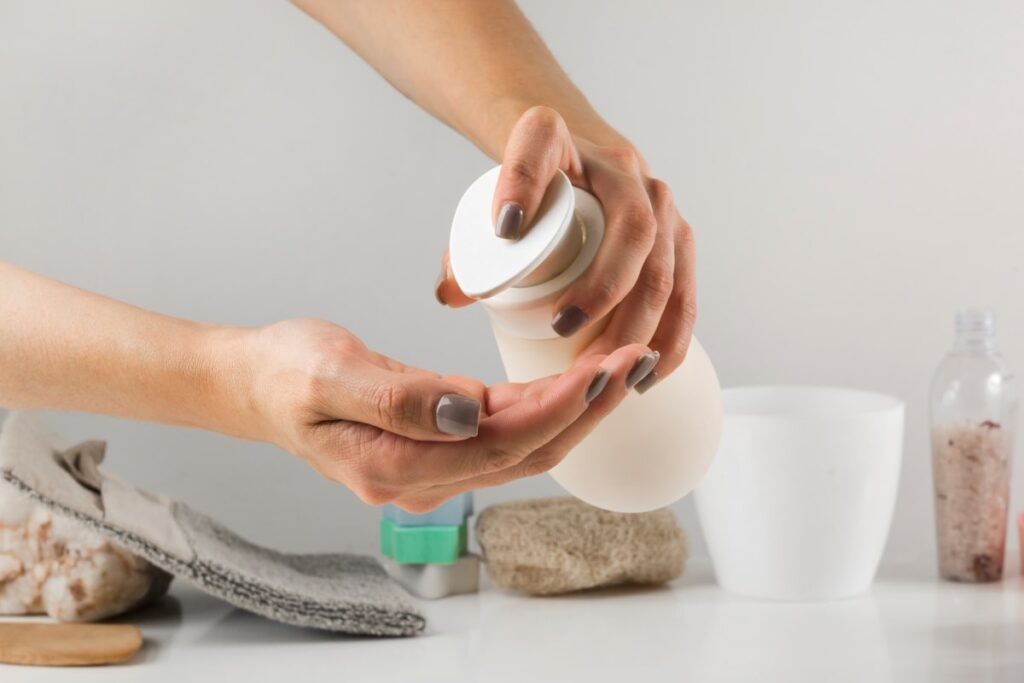
10 Simple Steps to Crafting Perfect Foaming Hand Soap at Home
Learning how to make foaming hand soap at home is a simple method that lets you generate a customized, useful product. This step-by-step tutorial will bring you through the whole process of manufacturing foamy hand soap, regardless of your goals—creating a particular aroma, skin benefits, or just enjoying the craft.
Step 1: Gather Your Supplies and Ingredients
Make sure you have all the materials and ingredients available before you begin:
- Foaming soap dispenser
- Measuring cups and spoons
- Distilled or filtered water
- Liquid Castile soap
- Essential oils (optional)
- Carrier oils (optional)
- Vitamin E oil or aloe vera gel (optional)
- Mixing bowl or jar
- Funnel (optional)
Having everything prepared will make the process smooth and efficient.
Step 2: Add Water to the Dispenser
The first step in how to make foaming hand soap is to measure out the appropriate amount of water. About ¾ cup of distilled or filtered water is needed for a basic foamy soap dispenser. This foundation is what will make the concentrated soap diluted and give it the ideal foaming consistency.
Leaving room at the top for the soap and additional additives, carefully pour the water into the dispenser. Use a funnel to prevent spillage if the dispenser’s aperture is small.
Step 3: Add Liquid Castile Soap
Next, measure out two teaspoons of Castile soap in liquid form. Due to its high concentration, castile soap only needs a tiny amount to produce a thick froth.
Pour the Castile soap slowly into the water dispenser. This stage is essential for making sure that the soap and water ratio is correct, which directly impacts the foaming quality. This is something you’ll discover when you learn how to produce foamy hand soap.
Step 4: Customize with Essential Oils (Optional)
Enhancing it with essential oils is one of the best things about how to make foaming hand soap. Five to ten drops of your favorite essential oil can be added to the mixture to create a natural aroma. Popular options include citrus oils like lemon and orange, tea tree, peppermint, and lavender.
These oils have the ability to improve fragrance while also offering other advantages including soothing or antimicrobial characteristics.
Step 5: Incorporate Carrier Oils (Optional)
Add a carrier oil for even more skin nutrition. With every wash, carrier oils like fractionated coconut oil, jojoba, or almond oil can help hydrate your skin.
Fill the dispenser with around ½ teaspoon of the carrier oil of your choice. This step will make your homemade foamy hand soap even more delicate and moisturizing, especially if you have dry or sensitive skin.
Step 6: Add Vitamin E Oil or Aloe Vera Gel (Optional)
Another optional step in how to make foaming hand soap is adding vitamin E oil or aloe vera. These compounds offer additional moisturizing advantages and function as natural preservatives.
Fill the dispenser with one teaspoon of aloe vera gel or five to ten drops of vitamin E oil. After every usage, your hands will feel softer and more nourished thanks to these ingredients that can enhance the soap’s overall texture.
Step 7: Mix the Ingredients
After adding all the materials to the dispenser, firmly fasten the pump cover. Mix everything together by giving the dispenser a little whirl. To prevent the soap from foaming within the container too soon, don’t shake it too hard.
Swirling aids in distributing the essential oils and carrier oils throughout the mixture equally.
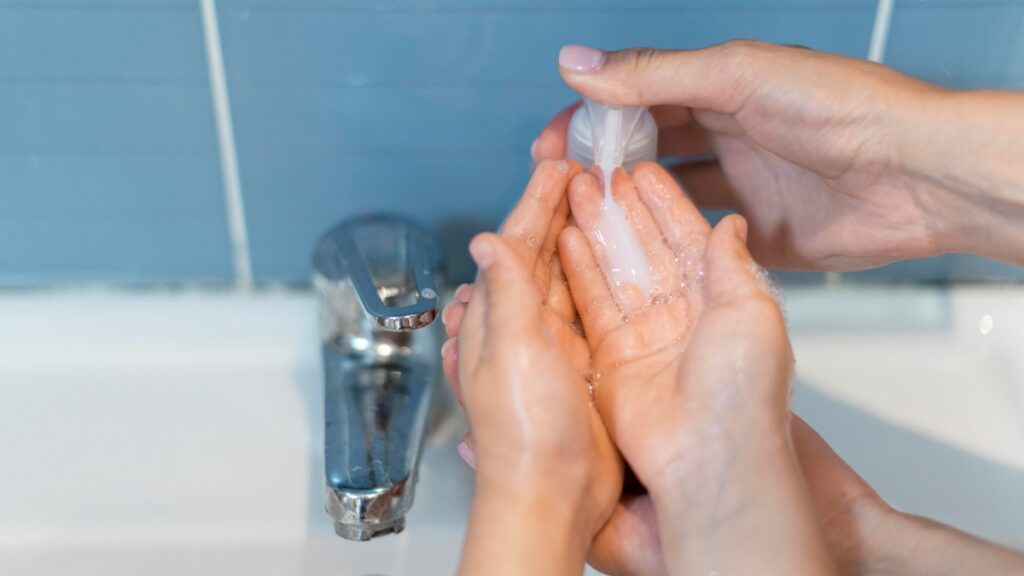
Step 8: Test the Foam
It’s time to test your invention after combining. Use a little pump to test the scent and consistency of the soap on your hands. A little additional Castile soap can be used if the froth is too thin. Adjust the essential oils based on how strong or mild the aroma is.
You can refine the product at this phase to make sure you’re happy with the outcome.
Step 9: Label and Store
It’s a good idea to mark your dispenser with the aroma and any specific ingredients if you’re preparing many batches or types. This maintains track of contents and helps prevent misunderstanding.
Your handmade foamy hand soap should be kept dry and cold. It should last for a few weeks to months, depending on usage and ingredients.
Step 10: Enjoy Your Homemade Foaming Hand Soap
You’ve mastered the art of creating foamy hand soap! Now, every time you wash your hands, take pleasure in the advantages of a customized, environmentally responsible, and skin-friendly product.
Why DIY Foaming Hand Soap?
Creating your own foaming hand soap offers a range of advantages that extend beyond simple cost savings. Whether you’re looking to personalize your soap, reduce environmental impact, or ensure healthier ingredients, the process of making foaming hand soap at home is both empowering and rewarding. Here’s a closer look at the key benefits:
✅ Customization and Personalization
One of the standout benefits of learning how to make foaming hand soap is the freedom to tailor the finished product to your own requirements. You have complete control over the recipe, so feel free to add skin-nourishing ingredients, add a smell of your choosing, or use it on sensitive skin. A foamy hand soap that is specifically tailored to your tastes may be made by experimenting with various essential oils, carrier oils, and natural ingredients.
✅ Cost-Effective
When you understand how to make foaming hand soap, you realize how much money you can save. Simple, long-lasting, and reasonably priced components like water and liquid Castile soap are needed to make homemade foaming hand soap. Furthermore, your supplies last longer because to foamy hand soap’s reduced product usage each wash, which lessens the need for frequent purchases. Dispensers can be reused to save money overall.
✅ Eco-Friendly and Sustainable
One great approach to lessen your environmental impact is to make your own foamy hand soap. Soaps purchased from stores sometimes come in single-use plastic bottles that increase waste. Reusing dispensers and learning how to produce foamy hand soap will help you reduce the amount of plastic you use. Selecting natural and biodegradable components also contributes to sustainable living practices by lowering the amount of hazardous chemicals released into the environment.
✅ Healthier Ingredients
Learning how to make foaming hand soap allows you to select non-toxic, healthier components. Preservatives, harsh chemicals, and artificial perfumes are frequently found in commercial soaps, which can irritate skin. When you make your own, you may use natural, skin-friendly products like carrier oils, essential oils, and liquid Castile soap. This not only makes the soap safer for your general health but also kinder to your skin.
✅ Gentle on Skin
Knowing how to make foaming hand soap allows you to generate a product that is gentle on your skin. Natural oils can be removed by many commercial soaps, which can cause dryness and irritation. Aloe vera gel, vitamin E, or jojoba oil are examples of moisturizing chemicals that may be added to soap to keep your hands moisturized and supple even after repeated usage.
✅ Creative Expression
Understanding how to make foaming hand soap opens up opportunities for creative expression. You can experiment with different scents, colors, and textures to craft a soap that reflects your style. Whether you enjoy floral, citrus, or herbal aromas, or prefer a soap that’s thick and creamy versus light and airy, the creative possibilities are endless. Making soap can also be a rewarding hobby, allowing you to share your creations with friends and family.

✅ Less Waste
When you learn how to make foaming hand soap, you contribute to waste reduction in multiple ways. Since foaming hand soap requires less soap per wash, your overall consumption decreases. Reusing dispensers reduces the need for new packaging, and opting for natural ingredients minimizes the environmental burden of synthetic chemicals.
✅ Empowerment and Knowledge
Gaining knowledge on how to make foaming hand soap empowers you to make informed decisions about the products you use daily. It deepens your understanding of ingredients and their effects on your skin and the environment. This knowledge fosters a more conscious approach to purchasing and using personal care products.
✅ Family-Friendly Activity
Learning how to make foaming hand soap can be a fun and educational activity for families. Involving children in the process teaches them about hygiene, the benefits of natural ingredients, and the value of creating something by hand. It’s a great way to spend quality time together while producing a useful product that the entire family can enjoy.
✅ Sense of Accomplishment
There’s a unique satisfaction in using a product that you’ve made yourself. By knowing how to make foaming hand soap, each time you use it, you’ll feel a sense of accomplishment, knowing that you’ve created something beneficial for your skin and the environment. This can enhance your daily routines and promote a more mindful, intentional lifestyle.
FAQ
Is It Safe to Use Essential Oils in Foaming Hand Soap for Sensitive Skin?
When learning how to make foaming hand soap for sensitive skin, it’s important to choose gentle essential oils and test a small amount first. Oils like lavender and chamomile are generally safe, but always start with a lower concentration and monitor your skin’s reaction.
Can I Use Regular Tap Water to Make Foaming Hand Soap?
When making foamy hand soap, tap water can be used, although it’s preferable to use distilled or filtered water. This guarantees a longer shelf life and helps keep any contaminants or minerals from harming the soap’s quality.
How Can I Make My Foaming Hand Soap More Moisturizing?
Add ½ teaspoon of a carrier oil, such as fractionated coconut oil, almond oil, or jojoba oil, to your foamy hand soap to make it more hydrating. For added moisture and skin nutrition, you may also mix in a teaspoon of aloe vera gel or a few drops of vitamin E oil.
How Long Does Homemade Foaming Hand Soap Last?
Homemade foaming hand soap has a long shelf life of many weeks to months if it is produced with distilled or filtered water and kept correctly. Its shelf life is further increased by the natural components utilized in the procedure, such as carrier and essential oils.
Wrapping Up
Mastering how to make foaming hand soap is a rewarding and empowering experience that combines creativity, cost-effectiveness, and a commitment to better health and sustainability. By following the simple steps outlined in this guide, you can create a personalized product that not only meets your skin’s needs but also aligns with your values.
Whether you’re looking to reduce your environmental footprint, save money, or enjoy the satisfaction of using something you’ve crafted yourself, making foaming hand soap at home offers numerous benefits. With just a few basic ingredients and a touch of creativity, you can transform your daily hand-washing routine into a luxurious, eco-friendly, and skin-friendly experience. So why not give it a try? You’ll love the results, and so will your hands!
